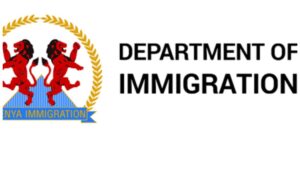List of government institutions where Kenyans wait long to be served; Report

Police Service, Ministry of Lands and Judiciary top list of government institutions where Kenyans wait long to be served.
A new report from the Office of the Ombudsman has highlighted significant delays in the provision of government services in Kenya.
The Status of Administrative Justice and Access to Information Report, released on Wednesday, May 22, reveals that 17 public institutions accounted for over half of the total complaints filed between 2012 and 2023.
The National Police Service, the Ministry of Lands and Physical Planning, the Ministry of Interior and Coordination of National Security, and the Judiciary were identified as the most frequently complained-about institutions.
The findings underscore the pervasive challenges Kenyans face in accessing timely and efficient public services.
The Commission, in its eleven years of existence, has managed 42,678 cases, resolving 25,501 of them, marking a resolution rate of 59.8 percent.
The report specifies that complaints against the National Police Service constituted the highest percentage at 9.22 percent, followed by the Ministry of Lands and the Ministry of Interior at 6.88 percent and 6.62 percent, respectively.
The Judiciary was the subject of 5.82 percent of the complaints, while the Ministry of Education, County Governments, the Office of the Attorney General, and the National Treasury received 3.82 percent, 3.33 percent, 2.46 percent, and 2.30 percent of the complaints, respectively.
Other government institutions with over one percent but below two percent of complaints include the Teachers Service Commission, Ministry of Labour and Social Protection, Pensions Department, National Land Commission, Kenya Power, Department of Civil Registration, Ministry of Health, Office of the Director of Public Prosecutions, and the Department of Immigration.
According to the Ombudsman, delays, defined as the failure by a public institution to act within a reasonable time according to standard procedures, are the most common form of maladministration, comprising 22.60 percent of the overall complaints.
Unresponsive official conduct, which refers to the failure of a public officer to respond to communication without justifiable cause, follows at 19 percent.
Other significant issues highlighted include abuse of power, unfair treatment, and administrative injustice. Manifest injustice accounted for 16.40 percent of the complaints, inefficiency for 12.50 percent, unfair treatment for 11.30 percent, abuse of power for 10.60 percent, oppressive official conduct for 5.60 percent, and discourtesy for 2 percent.
Wamuchoba hits out at Waiguru over her attacks on DP Gachagua
Governor Waiguru wants to replace Gachagua as deputy president in 2027; Kirinyaga Women claims
Angry youth attacks police officer on patrol
Ruto forced to apologize to his daughter in US
Former Uhuru Kenyatta communication expert tours White House ahead of Ruto visit
Coca-Cola to invest Ksh23 billion in Kenya after Ruto deal
List of sectors well-paying jobs – KNBS Report
The report points out that Kenyans are more likely to face delays than discourtesy when seeking government services.
This has significant implications for the efficacy and public perception of these institutions.
The National Police Service, comprising the Kenya Police Service, Administration Police Service, and the Directorate of Criminal Investigations, has been a particular focal point.
The police service, with approximately 101,288 officers, is divided into several specialized units dealing with diverse issues such as traffic, tourism, railways, and critical infrastructure protection.
Despite these divisions, the service continues to be plagued by complaints of inefficiency and misconduct.
The Independent Policing Oversight Authority (IPOA), established to monitor and investigate police misconduct, has recorded an increase in complaints from 594 in 2012 to 3,583 in 2021.
A significant portion of these complaints, 36.1 percent, pertained to allegations of police assault, 30.6 percent involved shootings that caused harm, and 22 percent involved fatalities.
Despite the IPOA’s efforts, many of these cases remain unresolved, indicating a persistent issue within the police service.
Also read,
DP Gachagua reaches out to Uhuru again for reconciliation amid fallout with Ruto
Details of a meeting between Raila and two ambassadors
Raila spokesperson warns Gachagua against clashing with Ruto “Your boss isn’t like Uhuru”
Parents storm school demanding transfer of their principal
Government issues warning over fake job recruitment letters in circulation
Follow us





